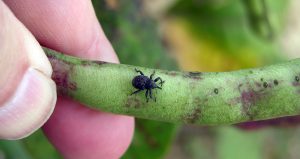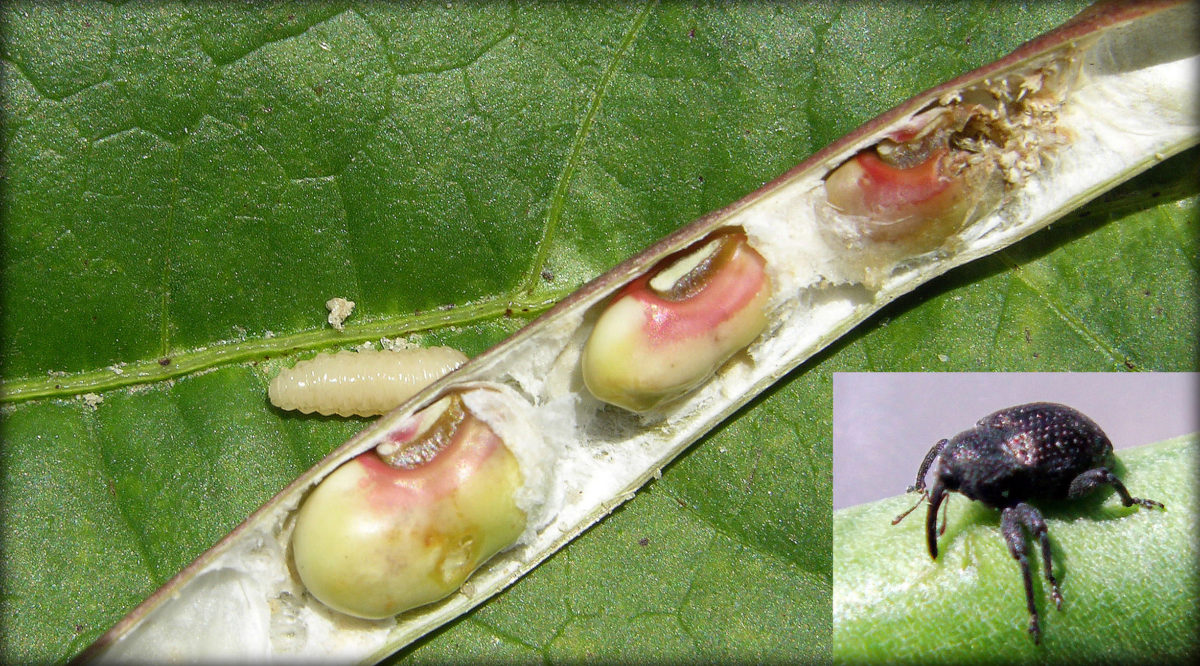By Breanna Kendrick
One of the toughest insect problems to deal with in the Southeast is cowpea curculio. It has been very difficult to control because it becomes resistant to insecticides.
Cowpea curculio is a weevil that can be very destructive to the crops it attacks. This pest is just as destructive to southern peas as the boll weevil is to cotton.
The cowpea weevil is originally from Mexico and Central America. This weevil arrived in North America in the 1800s. The three states most severely impacted by cowpea curculio are Georgia, South Carolina and Alabama.
David Riley, professor of entomology at the University of Georgia, has been conducting research on cowpea curculio for the past eight years. He says weevils wreak havoc on southern pea crops when the peas start to flower. “The cowpea weevils will come into the fields and search for young developing pea pods to lay their eggs in,” says Riley. “They will eat a little hole and lay an egg inside the pea pod. The egg will then hatch inside the pod, and the little grub will start to feed on the pea. It eventually eats the pea. When it matures, the grub will come out of the pea pod, drop to the ground, and then it will pupate in the soil.”
According to Riley, severe yield loss can occur in crops with a lot of weevils. “You could easily lose 70 to 80 percent of your production and basically make the peas so damaged that they’re hardly worth harvesting,” he says.
One recommendation that Riley suggests for growers in the southern part of Georgia is to plant their peas around the first week in August.
“There is a biological reason for that. The weevil actually gets ready for the winter and it goes into a diapause,” explains Riley. “Diapause is when the female weevils don’t develop eggs. They instead put on fat to survive the winter. What happens is in the fall, pea plants are starting to produce peas in late September. Weevils start to lay a lot of eggs because they are getting ready for the fall. If you plant in the first week of August, then you can avoid a certain amount of damage in the fall. But, with all the spring production and early summer production, you don’t have that advantage. It only occurs with peas that are maturing in late September and October.”
Riley is currently researching a genetically modified pea from Australia that is supposed to be resistant to the weevil. More information will be coming soon as his research continues.
Share this Post
Suwanee Valley Watermelon Institute Panel Highlights Grafting’s Importance During Fusarium Wilt Discussion
December 19, 2025Potential Whitefly Resistance a Concern for Growers Managing Cotton Jassid
December 18, 2025AgNet Interview: USDA FSA Administrator Discusses FBA Program, Specialty Crops
December 18, 2025Specialty Crop Grower Magazine: Certified South Carolina Connects Growers, Consumers
December 18, 2025










